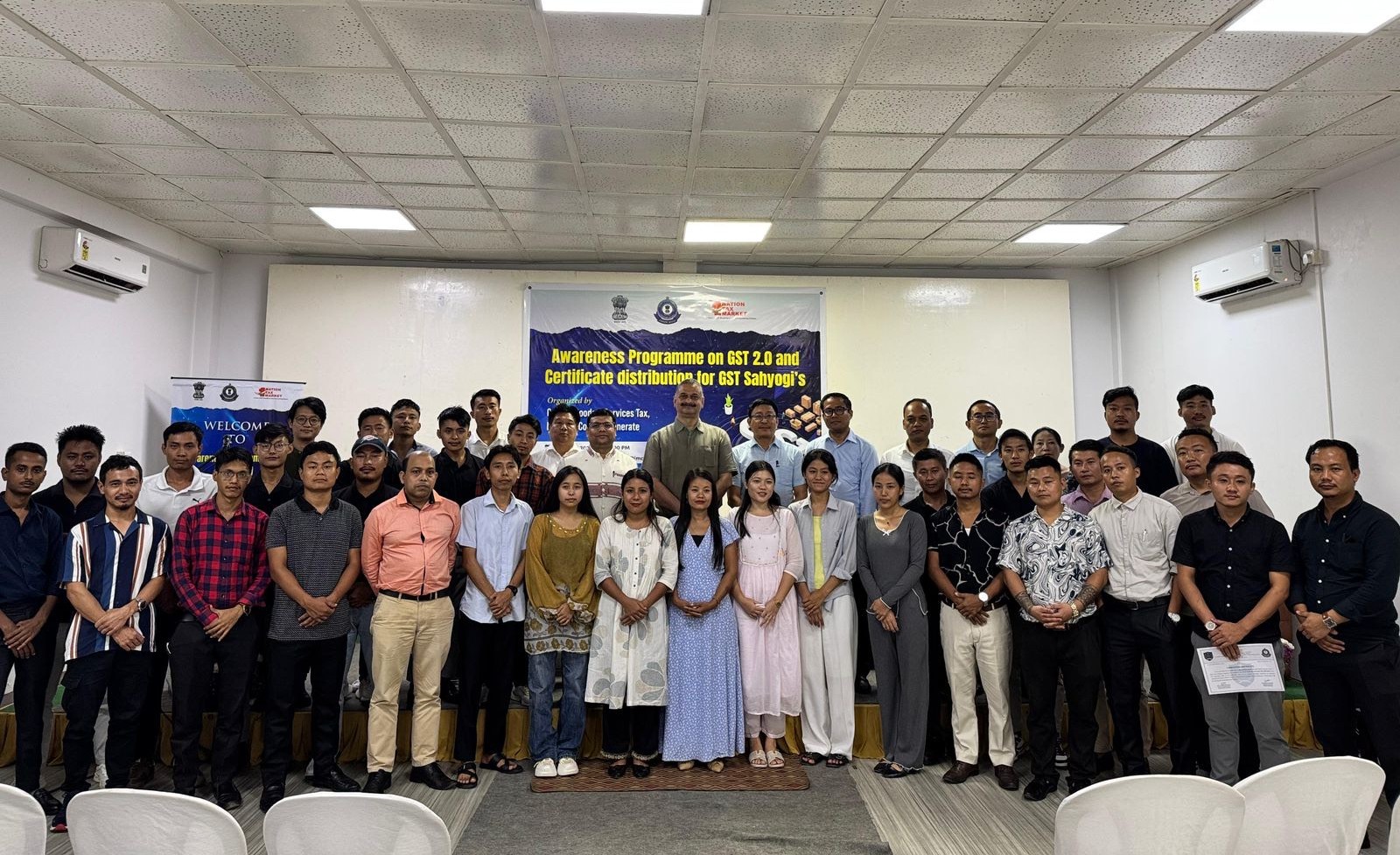SUNDAY, SEPTEMBER 28, 2025
- Home
- 35 youths trained as GST Sahyogis in Nagaland
35 youths trained as GST Sahyogis in Nagaland
Thirty-five youths in Nagaland completed training as GST Sahyogis under GST 2.0 reforms, bridging rural and urban tax compliance.
Share

DIMAPUR — An awareness programme on the recent reforms in Goods and Services Tax (GST) and certificate distribution for GST Sahyogis was held at Hotel Saramati on September 26.
SK Sinha, chief commissioner of Central Goods and Services Tax (CGST) and Customs of the Northeast zone, was the special guest at the event, which was attended by officers of central and state GST departments along with representatives of local trade bodies, according to a press release.
A total of 35 local youth from Nagaland underwent an intensive two-week training course at CGST Dimapur, conducted by the National Academy of Customs, Indirect Taxes and Narcotics (NACIN), Shillong.
Resource persons were flown in from Chennai, Lucknow, Kolkata, Guwahati, and other parts of the country to impart quality training in GST basic compliance to the GST Sahyogis.
Isaac Kharkongor, additional director of NACIN, said that the GST Sahyogi (helper/companion) programme is a pilot project being implemented first in Nagaland, and its successful implementation will be scaled up and replicated in other parts of the country as well. The training was especially curated, keeping Nagaland’s economic situation in mind.
Sinha said the new GST reforms will help every person across all sections of society since tax rates on essential commodities used by every person have now been reduced. Reduction in tax rates for everyday baskets of food items, medical costs, and education costs for children impacts all strata of society. With more savings in hand due to the tax reductions, a person will be in a position to have better purchasing power.
Regarding GST Sahyogis, he said the newly trained Sahyogis will be able to fill in the gap between rural and urban places in Nagaland. Taxpayers beyond Dimapur and Kohima would now be able to take assistance from them.
SK Mahanta, commissioner of CGST Dimapur, said that while GST being introduced in 2017 was an economic change, the current reforms under GST 2.0 are “citizen-centric reforms”. One of the big promises of GST 2.0 is consumer relief. Several items that are part of everyday household spending are moving into lower tax brackets and will become cheaper.
Some examples include food and household items, medicines and health products, and white goods such as refrigerators, washing machines, air-conditioners, and other appliances. While the reforms bring relief on many fronts, the government has also introduced a new 40% slab reserved for what it terms “sin and luxury goods”.

